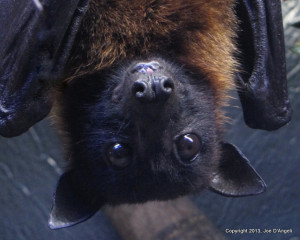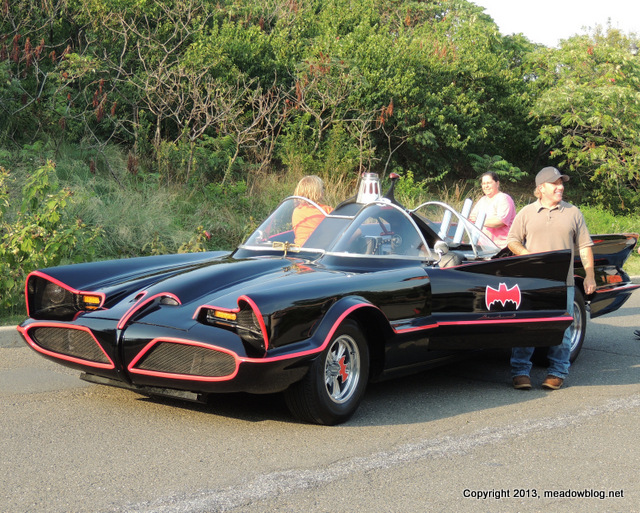Joe D’Angeli is living up to his nickname. For the second August in a row, the Bergen County animal rehabilitator known as the “New Jersey Batman” is coming to DeKorte Park in Lyndhurst to raise funds and awareness for these imperiled and often misunderstood mammals.
D’Angeli’s three-day event is called “Batstock,” and D’Angeli is kicking it off on Friday (Aug. 23) from 6 to 9 p.m. at the Meadowlands Environment Center. The $8 admission fee includes up-close looks at bats, an appearance by a genuine George Barris-designed Batmobile [baove], bat movies, snacks and beverages.
D’Angeli is kicking it off on Friday (Aug. 23) from 6 to 9 p.m. at the Meadowlands Environment Center. The $8 admission fee includes up-close looks at bats, an appearance by a genuine George Barris-designed Batmobile [baove], bat movies, snacks and beverages.
Proceeds from the event go to bat conservation groups, bat rehabilitators, wildlife conservation and education groups, and centers focusing on bats and white-nose syndrome — a deadly fungus that has wiped out more than 80 percent of the small brown bat population in the Northeast.
The idea for Batstock grew out of European efforts to get the public to appreciate bats more, first with the “Year of the Bat,” in 2011-2012, and then an annual international Bat Night. “Batstock was my three-day answer to Bat Night,” D’Angeli says.
A large part of his message is getting people to appreciate what bats do for the environment.
“The most obvious and most important contribution is their critical role in insect maintenance and agricultural pest control,” says D’Angeli, director of The Wildlife Conservation and Education Center in Ridgefield Park. “One little brown bat from our area can consume up to 1,000 mosquitoes in an hour!”
D’Angeli adds that bats from this region “were vitally important in developing and studying echolocation and bio-sonar — used widely in our Armed Forces’ jets, planes and ships as well as submarines.”
According to D’Angeli, New Jersey is home to nine species of bats, many of which are cave-dwellers — the ones most affected by white-nose syndrome, and the ones whose populations have plummeted.
Since 2006, millions of hibernating bats have died from the disease, named for a white fungus typically found on the faces and wings of infected bats. The infected bats typically emerge from hibernation too early and fly around in mid-winter — only to freeze or starve to death.
“Although we do see bats returning to our area, the devastating damage had already been done in that first winter, he says. “We will not see bat populations returning to normal for probably 20 years.”
A couple of years ago, I participated in a bat survey of the Meadowlands that used a super-sensitive microphone to record their ultrasonic call patterns. The microphone could detect bats echo-locating from up to 100 yards away.
With the help of the Conserve Wildlife Foundation, we used the microphone to record a total of 24 bat calls in roughly 45 minutes in Kearny and North Arlington. Twenty-two of the calls were big brown bats, and two were red bats. A third call pattern, most likely made by a Hoary Bat, was also detected.
Bats are definitely living in the Meadowlands, and they could use your help.
For more information on Batstock, visit WWW.BATSTOCK.ORG or call (201) 257-2231.

